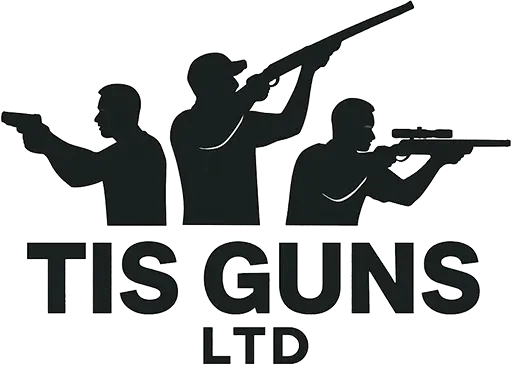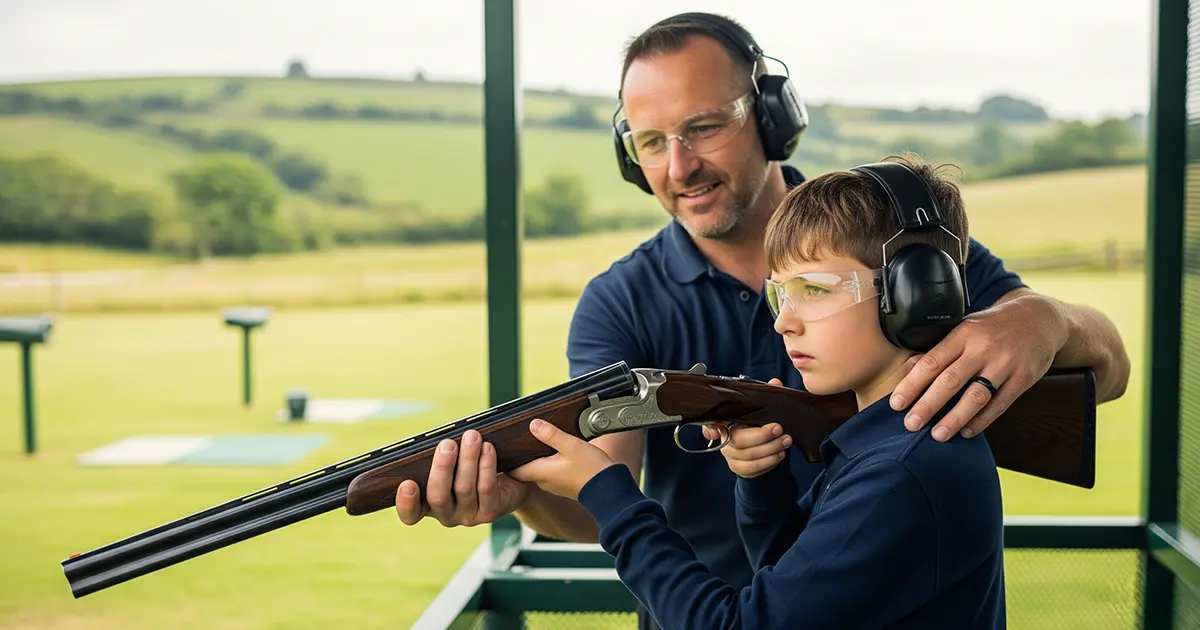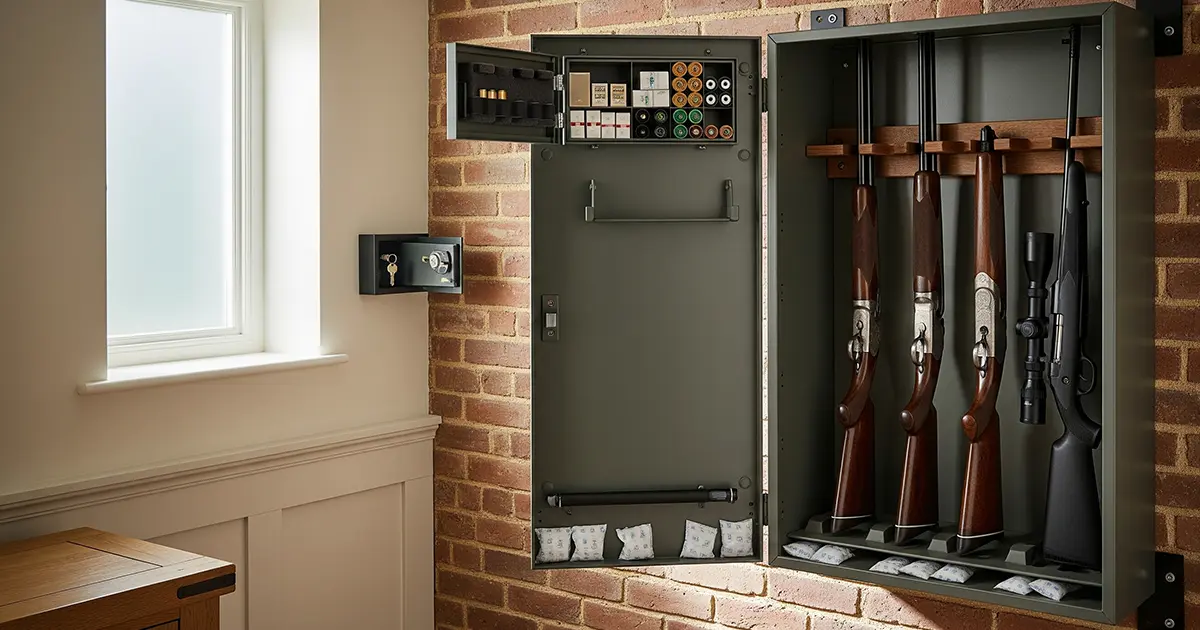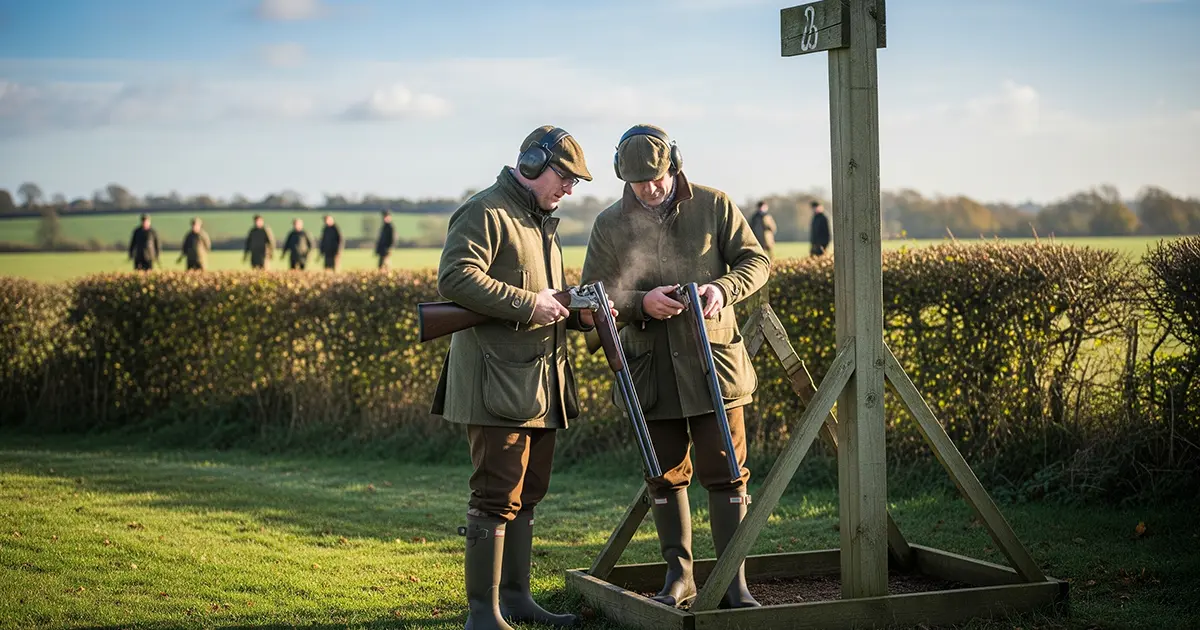Introducing a child to shooting starts with safety and ends with confidence. This article sets out a calm, UK-compliant pathway that parents and coaches can follow at home, at clubs, and on clay grounds. It blends what the law actually says with how good sessions run in the real world, so youngsters learn sound habits and enjoy the sport from the first mount.
“A great junior session is quiet, structured and repeatable. We slow everything down, fit the kit properly, then add challenge only when safety habits are automatic.”
David Bellamy, Managing Director, The Instinctive Shooter
The law in plain English
Before any plan, confirm what is lawful for young people.
- Shotguns and supervision: Under 15s may only have an assembled shotgun while supervised by someone aged 21 or over, or the gun must be in a securely fastened cover so it cannot be fired. Under 18s cannot buy or hire firearms or ammunition. These rules come directly from section 22 of the Firearms Act 1968. Legislation.gov.uk
- Air weapons in England and Wales: It is an offence to let a pellet leave your boundary. Under 18s need correct supervision or a qualifying setting such as an approved club. GOV.UK
- Air weapons in Scotland: Most air weapons require an Air Weapon Certificate, with specific visitor permit routes for trips north. Check Police Scotland’s guidance before you travel. Police Scotland, Scottish Government
- Section 1 rifles and approved clubs: Younger shooters progress legally and safely through Home Office approved rifle clubs, which operate under set criteria and oversight. GOV.UK
What “good” looks like on a clay ground
Clay grounds and shooting schools set clear protective standards, and the CPSA rulebook makes key items non-negotiable at registered events.
- Hearing and eye protection: The CPSA requires hearing protection to be worn, and mandates visible eye protection for competitors, officials and spectators at, or around any shooting position at registered events. The rules also recommend BS EN 166:2002 as a minimum eyewear standard. Clay Pigeon Shooting Association
- On-stand behaviour: Load only inside the stand, keep muzzles down-range, and open the action the moment a shot is finished. These expectations sit inside the CPSA rules and are reinforced by ground briefings.
“We fit glasses and muffs before a single live round. Small heads need smaller kit, so comfort and seal come first. If protection is fiddly or fogging, attention drifts, and safety drifts with it.”
David Bellamy
Practical tips that make PPE work for juniors
- Choose wraparound glasses that meet EN 166, with anti-fog wipes handy for humid days.
- Teach correct muff seal and, for busy layouts, consider plugs under low-profile electronic muffs so youngsters can still hear instructions. The HSE is clear that protection only works when it is worn and fitted correctly, every time. HSE
A safe, confidence-building first session
Session arc we use with families at TIS Guns
- Briefing, two minutes: Range commands, stop word, safe direction, where eyes and muzzles live.
- Dry handling: Mounts with an empty gun or training aid, then opening and closing smoothly.
- Live fire, low intensity: One shot at a time at a simple going-away target, full supervision, immediate unload and review.
- Short blocks: Ten to fifteen minutes of focus, then a water break and a quick debrief, noting one safety habit to keep.
Real-world example, “Sam, age 12”
Sam arrived nervous and sensitive to noise. We began with fit checks and lightweight cartridges, then five single going-away clays, then a pause. By the second block, his mount was quieter and his eyes stayed on the target. We ended with a recap he could repeat at home in front of a mirror, glasses on, finger indexed on the action, action open when moving.
Eye dominance, explained simply
Unchecked eye dominance can stall progress. The CPSA’s guidance sets out simple detection and short-term fixes like a discreet occlusion patch on the off-eye lens, which preserve peripheral vision while keeping the master eye over the rib. Clay Pigeon Shooting Association
“We check dominance before the first live round. A tiny patch on the glasses can transform early confidence, and it is fully reversible as the youngster settles.”
David Bellamy
Loads and recoil that keep smiles, not flinches
For young or lighter shots, lighter clay loads reduce fatigue and help technique stick. UK coaching articles point new 20 bore users to 21 or 24 gram options, and many grounds prefer 24 to 28 grams for general use. We start juniors at the softer end, then adjust with fit first, load second. Shooting UK
Safe and legal at home with air rifles
Garden practice can be lawful, but only with the right set-up.
- The boundary rule: It is an offence if a pellet leaves your boundary, and supervising adults commit an offence if they allow it. Use a reliable backstop and pick angles that fully contain misses. GOV.UK
- Storage where children are present: In England and Wales, since July 2023 the required “reasonable precautions” include locking air weapons out of sight and storing ammunition separately when under 18s are on the premises. GOV.UK
- Good practice for all firearms: Follow the Home Office Firearms Security Handbook for cabinets, keys and transport. Simple rule, the gun is locked, access to keys is controlled, ammo is stored responsibly. GOV.UK
Home set-up example, “quiet garden lane”
We built a 10 metre lane with a pellet catcher and a timber-backed sand trap, target at chest height, firing position angled down into the trap. Session runs only when a supervising adult is present, signage at gates, neighbours informed. After each session the air rifle is unloaded, checked safe, and locked away, pellets stored separately.
Safeguarding and supervision that reassure families
Parents value visible safeguarding as much as visible ear defenders.
- Use qualified coaches and instructors for junior sessions, log parental consent, and set a clear stop procedure.
- For regular junior coaching roles in sport, DBS eligibility guidance applies, and clubs should follow NSPCC CPSU safer recruitment practice. GOV.UK, Child Protection in Sport Unit (CPSU)
Insurance and admin, without the headache
CPSA membership includes public liability and personal accident cover relevant to clay activities and coaching, which is why many families join once lessons become regular. Grounds will also have their own cover for have-a-go sessions, so ask what applies on the day. Clay Pigeon Shooting Association
How The Instinctive Shooter can help
- Junior-friendly gun fit: Try-guns, spacer kits and soft recoil pads so the gun meets the child, not the other way round. We reassess as they grow.
- Safety kit that fits: EN 166 rated junior glasses, slim-profile muffs, foam plugs and anti-fog options, with a quick mirror fit-check routine taught at the counter. Clay Pigeon Shooting Association
- Air rifle essentials: Chamber flags, target traps, pellet catchers and secure storage solutions that meet the latest Home Office guidance for homes with under 18s. GOV.UK
- Club pathway: Introductions to CPSA grounds and Home Office approved rifle clubs that welcome young shooters, with range orders and coaching structures in place. GOV.UK
Quick answers we hear every week
Do juniors need both eye and ear protection?
Yes. On CPSA registered events, hearing and visible eye protection are mandatory around shooting positions. Many grounds apply the same standard on lessons and practice. Clay Pigeon Shooting Association
Can my child hold a shotgun between stands if I am nearby?
Under 15s may only have an assembled shotgun when supervised by someone 21 or over, otherwise it must be in a securely fastened cover. Legislation.gov.uk
Can we practise with an air rifle in the garden?
Yes, if lawful at your address, pellets must not leave your boundary, and you store the rifle securely with ammunition separate when under 18s are present. GOV.UK
What about Scotland next half term?
Check Air Weapon Certificates and visitor permits before you travel. Police Scotland’s page is the place to start. Police Scotland
Closing thoughts…
Teaching young shooters well is simple to describe and careful to deliver. Fit the kit, keep the rules clear, run short sessions, and praise the process. If you would like a tailored safety introduction for your family, or help choosing compliant kit that fits smaller faces and frames, The Instinctive Shooter is ready to help.
Straight Answers for Families Raising Young Shooters
What Is the Best Age to Start Teaching a Child Gun Safety?
There is no fixed legal age for learning safe handling, but maturity matters more than numbers. Many start with supervised air rifle handling around age 8 to 10, focusing on safety routines long before live shotgun or rifle use.
How Do I Know If My Child Is Ready for Live Firing?
Look for consistent muzzle awareness, listening to instructions first time, and safe handling with dummy rounds. If those habits are automatic, short supervised live-fire sessions with light loads are a safe next step.
Can My Child Shoot Without Me Present If Another Adult Is Supervising?
Yes, as long as the supervising adult meets the legal age and qualification for that firearm type. For example, under 15s with shotguns must be supervised by someone aged 21 or over, even if that person is not a parent.
What Should I Look for in Junior Shooting Glasses?
Ensure they meet EN 166 safety standards, fit securely without gaps, and have lenses large enough to cover the full eye area. Anti-fog coatings or wipes can prevent steaming up, which is a common distraction for juniors.
How Can I Make Recoil Less Intimidating for My Child?
Use a properly fitted gun, light loads, and a soft recoil pad to reduce kick. Building good stance and mounting technique also helps spread recoil more evenly, making shooting more comfortable.
Do We Need Special Insurance for Junior Shooters?
Many clubs and grounds have insurance that covers participants during supervised sessions. Joining organisations like the CPSA adds personal liability and accident cover, which is worthwhile if shooting becomes a regular activity.




